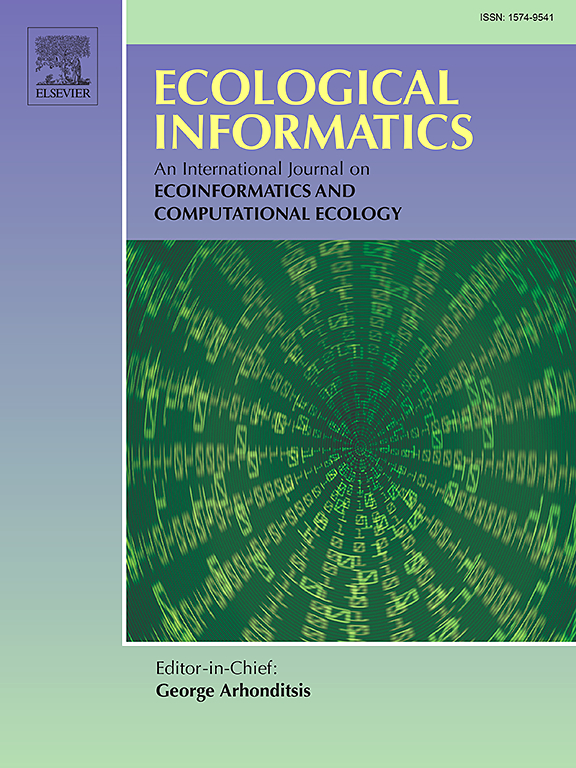Assessing eco-physiological patterns of Ailanthus altissima (Mill.) Swingle and differences with native vegetation using Copernicus satellite data on a Mediterranean Island
IF 5.8
2区 环境科学与生态学
Q1 ECOLOGY
引用次数: 0
Abstract
Biological invasions, one of the most pervasive components of global change, can cause irreversible alterations in the composition and functioning of ecosystems. This includes changes of eco-physiological traits of plant communities. Satellite remote sensing provides the means to map surrogates of ecosystem composition and functioning such as eco-physiological traits over large spatial extents. In this study, Sentinel-2 and Sentinel-3 Copernicus satellite data resampled to 20 m2 spatial resolution was used to characterize the annual cycle of spectral eco-physiological traits in 176 patches invaded by Ailanthus altissima (Mill.) Swingle in Sardinia (Italy) and in their corresponding and surrounding non-invaded areas. The overall aim was to examine if and how eco-physiological traits differed between A. altissima and native vegetation classes. A set of spectral eco-physiological indices proxies related to leaf chlorophyll and carotenoid content (Chlorophyll Vegetation Index − CVI, Structure Intensive Pigment Index 3 − SIPI3), productivity and canopy biomass (Enhanced Vegetation Index − EVI, Leaf Area Index − LAI), leaf water content (Normalized Multi-band Drought Index − NMDI, Moisture Stress Index − MSI), daily evapotranspiration (ET), and soil features (Coloration Index − CI) were calculated. The monthly trends of these indices in invaded patches and the seasonal differences between invaded and non-invaded cells were analyzed using linear mixed models (LMMs). One-way Analysis of Variance (ANOVA), and Estimated Marginal Means (EMMs) were used to test the differences between invaded and non-invaded cells. Our results highlighted the effectiveness of Sentinel-2 and -3 data in capturing the temporal trends of spectral eco-physiological traits. Most significant differences between invaded and non-invaded cells were observed during summer, with invaded cells featuring higher productivity, canopy biomass, and leaf water content, while leaf carotenoid content and bare soil cover was lower. Overall, our findings based on satellite-based remote sensing analysis provide further evidence of the competitive advantages A. altissima has over native vegetation, particularly in summer, when vegetation in Mediterranean-type ecosystems faces an intense drought stress. Such spatially explicit information facilitates the identification and selection of field sites for proximal measurements of the alterations and potential impacts attributed to A. altissima invasion.

求助全文
约1分钟内获得全文
求助全文
来源期刊

Ecological Informatics
环境科学-生态学
CiteScore
8.30
自引率
11.80%
发文量
346
审稿时长
46 days
期刊介绍:
The journal Ecological Informatics is devoted to the publication of high quality, peer-reviewed articles on all aspects of computational ecology, data science and biogeography. The scope of the journal takes into account the data-intensive nature of ecology, the growing capacity of information technology to access, harness and leverage complex data as well as the critical need for informing sustainable management in view of global environmental and climate change.
The nature of the journal is interdisciplinary at the crossover between ecology and informatics. It focuses on novel concepts and techniques for image- and genome-based monitoring and interpretation, sensor- and multimedia-based data acquisition, internet-based data archiving and sharing, data assimilation, modelling and prediction of ecological data.
 求助内容:
求助内容: 应助结果提醒方式:
应助结果提醒方式:


